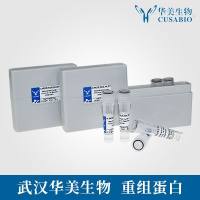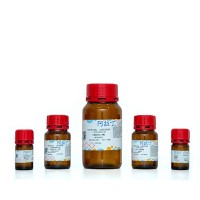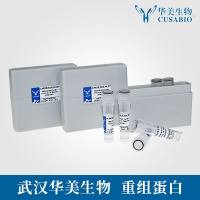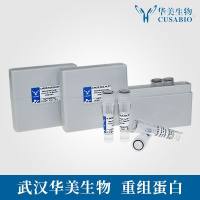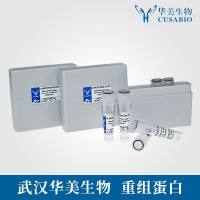Chromatin Assembly Using Drosophila Systems
互联网
- Abstract
- Table of Contents
- Materials
- Figures
- Literature Cited
Abstract
To successfully study chromatin structure and activity in vitro, it is essential to have a chromatin assembly system that will prepare extended nucleosome arrays with highly defined protein content that resemble bulk chromatin isolated from living cell nuclei in terms of periodicity and nucleosome positioning. The Drosophila ATP?dependent chromatin assembly system described in this unit meets these requirements. The end product of the reaction described here has highly periodic extended arrays with physiologic spacing and positioning of the nucleosomes.
Table of Contents
- Basic Protocol 1: Preparation of the Drosophila S‐190 Chromatin Assembly Extract
- Basic Protocol 2: Purification of Core Histones from the Drosophila Embryos
- Basic Protocol 3: Chromatin Assembly with the S‐190 Extract
- Basic Protocol 4: Expression and Purification of the Recombinant Drosophila ACF
- Basic Protocol 5: Expression and Purification of the Recombinant Drosophila NAP‐1
- Alternate Protocol 1: Expression and Purification of the Recombinant Drosophila NAP‐1 (NTA Superflow Resin)
- Basic Protocol 6: Chromatin Assembly with Purified Recombinant Drosophila Factors
- Alternate Protocol 2: Titration of the Ratio of Core Histones to DNA in the Recombinant Chromatin Assembly Reaction
- Support Protocol 1: Expression and Purification of the Core Catalytic Domain of the Drosophila Topoisomerase I
- Reagents and Solutions
- Commentary
- Literature Cited
- Figures
Materials
Basic Protocol 1: Preparation of the Drosophila S‐190 Chromatin Assembly Extract
Materials
Basic Protocol 2: Purification of Core Histones from the Drosophila Embryos
Materials
Basic Protocol 3: Chromatin Assembly with the S‐190 Extract
Materials
Basic Protocol 4: Expression and Purification of the Recombinant Drosophila ACF
Materials
Basic Protocol 5: Expression and Purification of the Recombinant Drosophila NAP‐1
Materials
Alternate Protocol 1: Expression and Purification of the Recombinant Drosophila NAP‐1 (NTA Superflow Resin)
Basic Protocol 6: Chromatin Assembly with Purified Recombinant Drosophila Factors
Materials
Alternate Protocol 2: Titration of the Ratio of Core Histones to DNA in the Recombinant Chromatin Assembly Reaction
Materials
|
Figures
-
Figure 21.7.1 Chromatin assembly by the S‐190 extract. Lanes 1, 2—complete system, as described in ; lanes 3, 4—no S‐190 extract; lanes 5, 6—no core histones (note residual assembly activity with the endogenous histones of the extract); lanes 7, 8—no ATP; lanes 9, 10—no DNA template. View Image -
Figure 21.7.2 Chromatin assembly in the recombinant system. The reactions were performed as described in . The core histone to DNA ratios were initially estimated as: lanes 1, 2—0.8:1; lanes 3, 4—0.9:1; lanes 5, 6—1.0:1; lanes 7, 8—1.1:1; lanes 9, 10—1.2:1. View Image
Videos
Literature Cited
| Literature Cited | |
| Banerjee, S. and Cantor, C.R. 1990. Nucleosome assembly of simian virus 40 DNA in a mammalian cell extract. Mol. Cell. Biol. 10:2863‐2873. | |
| Becker, P.B. and Wu, C. 1992. Cell‐free system for assembly of transcriptionally repressed chromatin from Drosophila embryos. Mol. Cell. Biol. 12:2241‐2249. | |
| Bulger, M. and Kadonaga, J.T. 1994. Biochemical reconstitution of chromatin with physiological nucleosome spacing. Methods Mol. Genet. 5:241‐262. | |
| Bulger, M., Ito, T., Kamakaka, R.T., and Kadonaga, J.T. 1995. Assembly of regularly‐spaced nucleosome arrays by dCAF‐1 and a 56 kDa histone‐binding protein. Proc. Natl. Acad. Sci. U.S.A. 92:11726‐11730. | |
| Glikin, G.C., Ruberti, I., and Worcel, A. 1984. Chromatin assembly in Xenopus oocytes: In vitro studies. Cell 37:33‐41. | |
| Ito, T., Tyler, J.K., and Kadonaga, J.T. 1997a. Chromatin assembly factors: A dual function in nucleosome formation and mobilization?. Genes Cells 2:593‐600. | |
| Ito, T., Bulger, M., Pazin, M.J., Kobayashi, R., and Kadonaga, J.T. 1997b. ACF, an ISWI‐containing and ATP‐utilizing chromatin assembly and remodeling factor. Cell 90:145‐155. | |
| Ito, T., Levenstein, M.E., Fyodorov, D.V., Kutach, A.K., Kobayashi, R., and Kadonaga, J.T. 1999. ACF consists of two subunits, Acf1 and ISWI, that function cooperatively in the ATP‐dependent catalysis of chromatin assembly. Genes & Dev. 13:1529‐1539. | |
| Levenstein, M.E. and Kadonaga, J.T. 2002. Biochemical analysis of chromatin containing recombinant Drosophila core histones Submitted. | |
| Nakagawa, T., Bulger, M., Muramatsu, M., and Ito, T. 2001. Multistep chromatin assembly on supercoiled plasmid DNA by nucleosome assembly protein‐1 and ATP‐utilizing chromatin assembly and remodeling factor. J. Biol. Chem. 276:27384‐27391. | |
| Shaiu, W.L. and Hsieh, T.S. 1998. Targeting to transcriptionally active loci by the hydrophilic N‐terminal domain of Drosophila DNA Topoisomerase I. Mol. Cell. Biol. 18:4358‐4367. | |
| Stillman, B. 1986. Chromatin assembly during SV40 DNA replication in vitro. Cell 45:555‐565. | |
| Tyler, J.K., Adams, C.R., Chen, S.‐R., Kobayashi, R., Kamakaka, R.T., and Kadonaga, J.T. 1999. The RCAF complex mediates chromatin assembly during DNA replication and repair. Nature 402:555‐560. |
